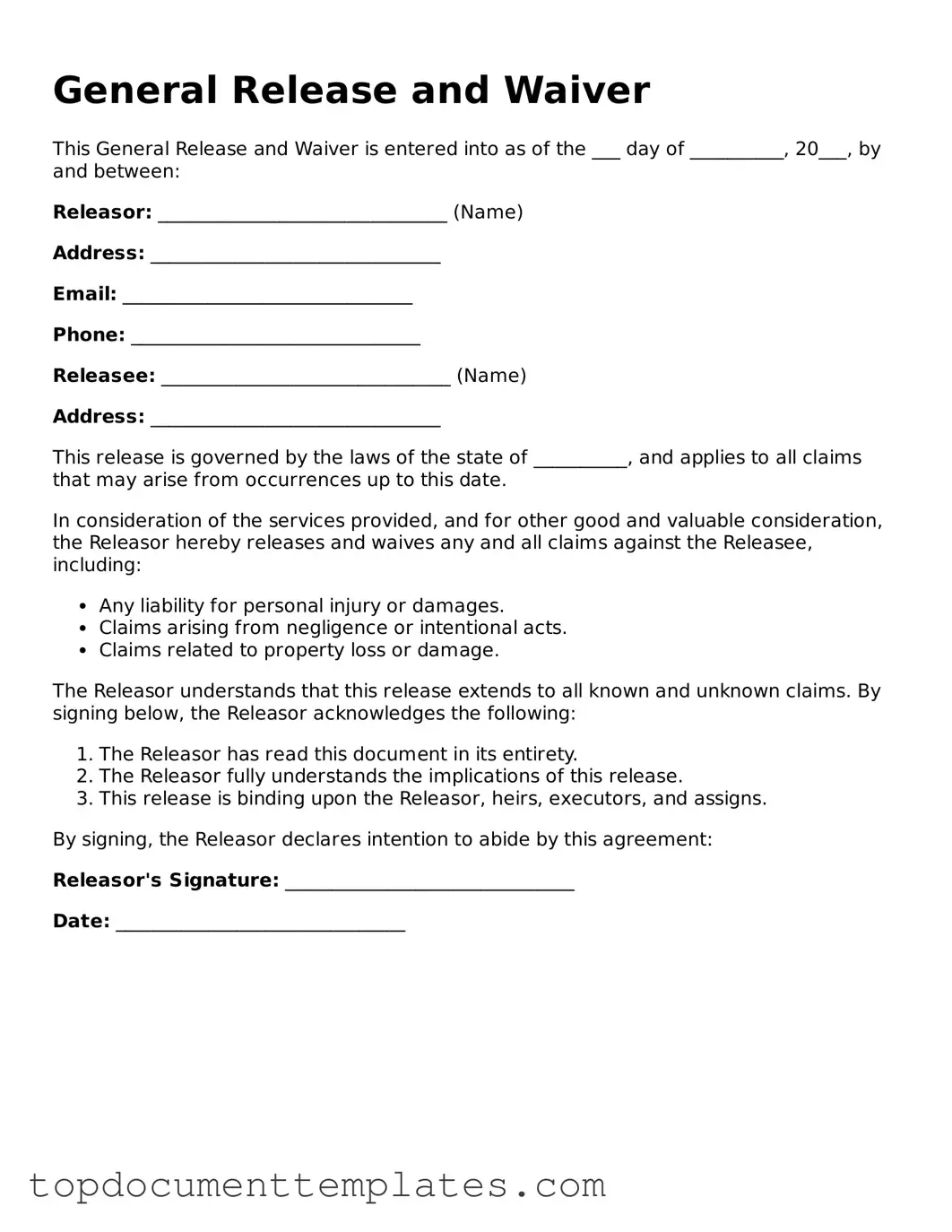The Release of Liability form is an essential document used in various activities and events to protect individuals and organizations from legal claims. It serves as a written agreement in which one party agrees to relinquish their right to hold another party responsible for any potential injuries or damages that may occur during a specific activity. This form is commonly utilized in situations such as sports events, recreational activities, and even certain types of contracts. By signing the form, participants acknowledge the risks involved and voluntarily accept those risks, thereby limiting the liability of the organizers or service providers. It is important to understand that while this form can provide a layer of protection, it does not absolve the responsible party from all liability, especially in cases of negligence or misconduct. Additionally, the effectiveness of a Release of Liability form can vary based on state laws and specific circumstances, making it crucial for individuals to carefully review and understand the terms before signing. Overall, this document plays a vital role in promoting safety and awareness while allowing individuals to engage in activities they enjoy.
